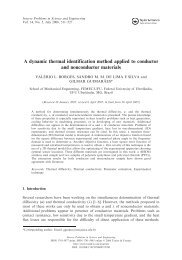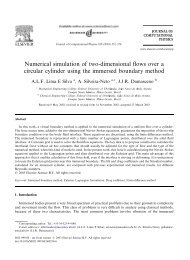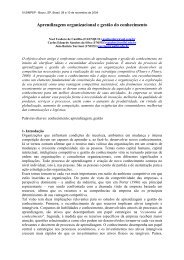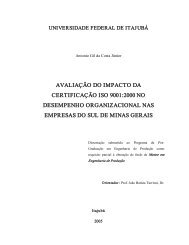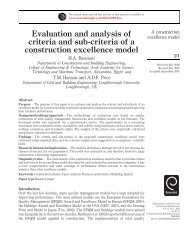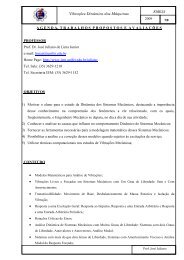Why Total Quality Management Programs Do Not Persist: The ... - IEM
Why Total Quality Management Programs Do Not Persist: The ... - IEM
Why Total Quality Management Programs Do Not Persist: The ... - IEM
You also want an ePaper? Increase the reach of your titles
YUMPU automatically turns print PDFs into web optimized ePapers that Google loves.
628 <strong>Why</strong> <strong>Total</strong> <strong>Quality</strong> <strong>Management</strong> <strong>Programs</strong> <strong>Do</strong> <strong>Not</strong> <strong>Persist</strong><br />
My own research on strategy implementation, though not focused on TQM<br />
strategies per se, provides empirical support for the propositions above. <strong>The</strong>se<br />
findings are reviewed next.<br />
THE SILENT KILLERS: UNDISCUSSIBLE MANAGEMENT<br />
BARRIERS TO STRATEGY IMPLEMENTATION<br />
For over a decade Russell Eisenstat and I have been conducting an action research<br />
program that reveals why a gap exists between senior management’s stated strategy<br />
and the capacity of the organization to implement it. Using an intervention<br />
called Organizational Fitness Profiling (OFP), designed to help senior teams inquire<br />
into the quality of their direction and the organization’s capacity to implement<br />
it as perceived by lower levels, we found, like Zbaracki (1998) who studied TQM<br />
programs, that employees perceive a gap between rhetoric and reality. Because<br />
OFP enabled lower levels to speak truthfully to senior teams about the causes of<br />
the gap, we were able to identify six core managerial barriers (Beer & Eisenstat,<br />
2000). We call them “silent killers” because, like cholesterol and hypertension,<br />
the silent causes of heart attacks, no one can talk openly about them (Morrison &<br />
Milliken, 2000). Because I will later argue that an inquiry process like OFP will<br />
be necessary to overcome the poor leadership and management that blocks a TQM<br />
transformation, I first describe the process briefly.<br />
<strong>The</strong> OFP process begins with the senior management team developing a<br />
one- to two-page statement of business and organizational direction that advocates<br />
their strategic intent—what the organization must do to succeed in achieving its<br />
objectives and what types of values and organizational capabilities they believe the<br />
organization needs to implement its strategic intent. <strong>The</strong> senior team then appoints<br />
a task force of 8 of their best people to interview 100 other key people from all<br />
parts of the organization one to two levels below the top team. Task force members<br />
conduct open-ended interviews under ground rules of complete confidentiality<br />
with the understanding that the top team will hear the unvarnished truth about<br />
strengths and barriers to implementation. <strong>The</strong>se interviews often turn out to be<br />
very emotional. In many organizations it is the first time lower levels have been<br />
asked to tell the truth to their leaders. Task force members also display emotions.<br />
<strong>The</strong>y are very anxious about feeding back their findings to the senior team and<br />
exhilarated about the opportunity they have been given to play a role in improving<br />
the organization’s effectiveness.<br />
<strong>The</strong> release of previously hidden data is made possible by the fact that<br />
management has committed itself publicly to hear the unvarnished truth and to<br />
make itself accountable to lower levels for doing something about what they<br />
learn. <strong>The</strong> “public” nature of the organizational conversation, in the context<br />
of a process that credibly enables truth to speak to power safely, is the key<br />
to breaking silence, changing norms of silence, and motivating management to<br />
act.<br />
A content analysis of the data from a dozen different organizations, subsequently<br />
validated through findings in many other organizations, has revealed that<br />
task forces almost always report the following six barriers as a group:



